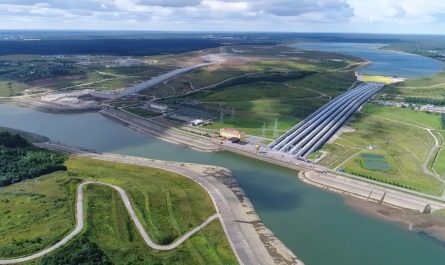As oil and gas drilling activities continue to grow at a rapid pace across the globe to meet the rising energy demands, proper management of drilling waste generated from these operations has become a major challenge for the industry. Drilling operations produce large volumes of liquid and solid waste that requires careful handling and disposal to avoid environmental damage. With increased public scrutiny around environmental protection, drilling companies need to ensure robust waste management practices are followed at all times.
Types of Drilling Waste
Drilling operations generate different types of waste depending on the drilling fluid systems used. The main categories include:
– Drilling Fluids and Muds: These contain clay, water, chemicals and drill cuttings and are commonly referred to as drill cuttings. Large volumes of drilling fluids and muds are produced during the drilling, cleaning and completion stages.
– Produced Water: This is water generated during oil and gas production. It contains dissolved salts, metals, oil and grease originating from the hydrocarbon reservoirs.
– Deck Drainage: Rainwater and wash water from the rig containing oil, grease and cleaning chemicals.
– Domestic Waste: Includes sewage, food wastes, paper, fabrics and other wastes from rig personnel.
– Completion, Workover and Treatment Fluids: These chemical mixtures are used for well completions, repairs and stimulations.
– Contaminated Equipment and Materials: Includes machinery, pipes, tanks and containment areas exposed to hydrocarbons and chemicals during the drilling process.
Regulations for Drilling Waste Management
Considering the environmental hazards posed by various drilling waste streams, regulations around the planning, handling, transport and disposal of wastes have strengthened significantly over the years. Some of the key legislations governing drilling waste in major markets include:
– In the US, the Environmental Protection Agency (EPA) regulates drilling wastes as per the Resource Conservation and Recovery Act (RCRA) and the Clean Water Act (CWA). The Bureau of Land Management also has specific Onshore Oil and Gas Orders for public lands.
– In Canada, provincial regulations are in place under environmental protection acts and oil and gas acts. The Canadian Environmental Protection Act also applies for certain waste streams transported across provinces.
– The EU has adopted comprehensive directives for mining and hydrocarbon waste under its Waste Framework Directive.
– Countries like Australia, Russia, Saudi Arabia, Mexico and more have also established detailed guidelines on various aspects of drilling waste handling in line with international standards.
Treatment and Disposal Methods
To ensure compliance with regulations, operators employ different treatment and disposal options based on the characteristics and volumes of each waste stream. Some commonly used methods include:
Onshore Treatment and Disposal
– Reserve Pit Impoundments or Drilling Fluid Reserve Pits: Multi-layer lined pits store drilling wastes temporarily onsite for natural drying and volume reduction.
– Solidification/Stabilization: Wastes are mixed with cement, fly ash or other agents and hardened into non-leachable sealed blocks for landfilling.
– Thermal Desorption: Organic contaminants are removed from soil/sludge through heat treatment, condensed and destroyed.
– Landfarming: Contaminated solids are tilled into agricultural land and biodegrade over time. Regular soil testing is done.
– Landfill Disposal: Approvals are needed to dispose treated wastes meeting regulatory standards at lined, permitted landfill sites.
Offshore and Transportation Options
– Cuttings Re-injection: Drill cuttings are re-injected into suitable geological formations below the seafloor.
– Transport to Shore by Barges/Trucks: Wastes are containerized, labelled and transported via road/sea as per packaging rules.
– Discharge with Produced Water: Low toxicity wastes meeting discharge standards are co-disposed with produced water far from shore.
– Ship-based Treatment: Mobile offshore units employ thermal desorption, centrifuging etc. to treat wastes before discharge or transport.
As drilling activity scales up globally, proactive waste management planning is critical to prevent environmental liabilities. Operators must conduct waste characterization, select scientifically approved treatment methods and ensure full compliance with changing regulations. Coordinated efforts between drilling companies, service providers, waste firms and regulators can help establish global best practices and push for increased reuse and recycling in the years ahead.
*Note:
1. Source: Coherent Market Insights, Public sources, Desk research
2. We have leveraged AI tools to mine information and compile it



